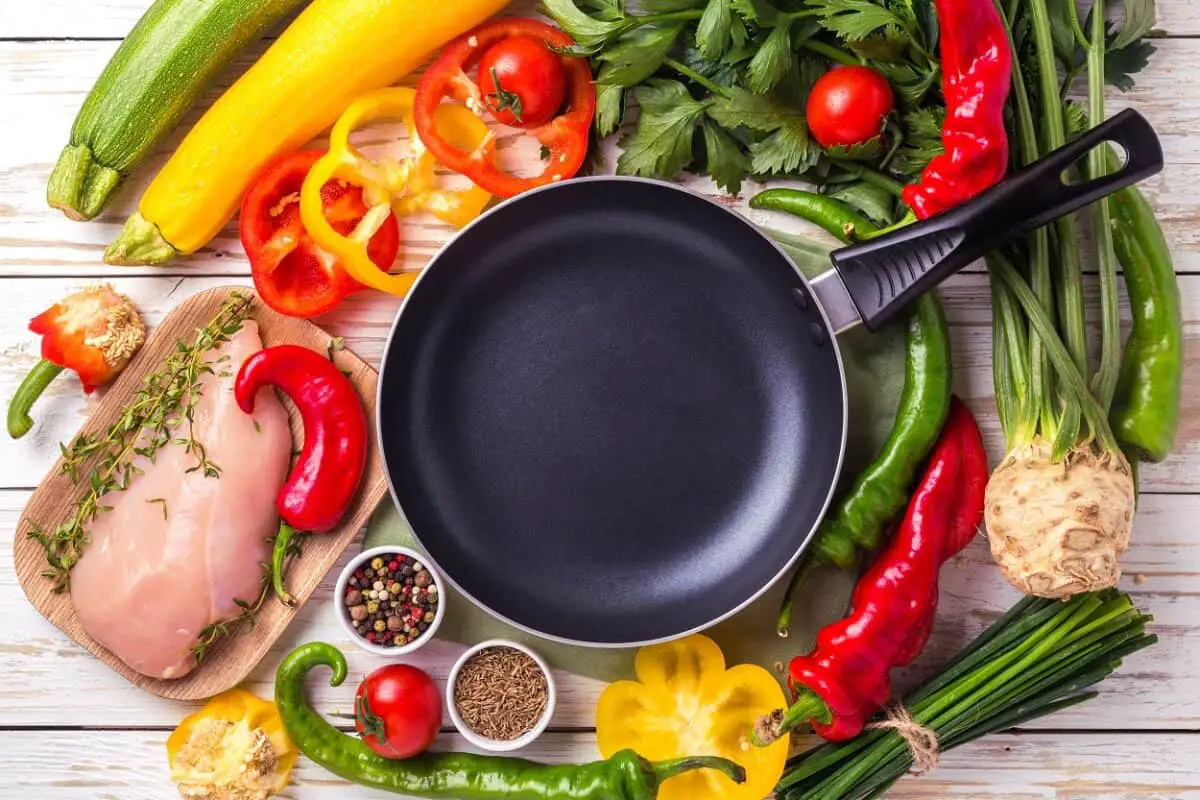Last Updated on 17th December 2021 by
There are a number of different ways to cook meat by heating. You can deep fry it, bake it, steam it, grill it, and pan sear it. It might be easy to understand how flames from a grill could lick up at the meat in cause it to char and cook. It might be a little harder to understand how the meat can be cooked when you place it into a frying pan.
There’s a scientific process there called convection, and it’s a method of heating something by heat transference. I’ll explain what that is, but first I want to talk about how you can heat meat up in a frying pan without damaging the pan and while still cooking the meat.
Why Doesn’t the Pan Get Damaged?
This is one of the big questions people have about how does meat get heated in a frying pan. They wonder how the meat can cook and change its texture and state when the frying pan stays the same.
Frying pans are specially tempered metal which is very good at transferring heat. What that means is that the heat moves from the fire or heating element through the pan, affecting whatever comes in contact with the pan. In this case, that’s the meat.
The pan doesn’t get damaged because it has been tempered and designed to handle heat. It takes a very high level of heat to damage, melt or change the state of the cast iron frying pan or cooking pot.
Most frying pans are made out of cast iron. That melts at a temperature of about 2750 degrees Fahrenheit. If you’re using a stainless steel pot, that is going to melt at about 2500 degrees Fahrenheit.
Most of the time, you’re not cooking your meat at above 400 degrees Fahrenheit, so it’s nowhere close to the required heat to even start to damage your pan. That’s why your pan stays intact, but the meat cooks. Meat needs to reach an internal temperature of around 140 degrees to be fully cooked, so you can easily cook it at much less than 400 degrees Fahrenheit.
The pan, on the other hand, is sitting pretty at whatever temperature you’re cooking your meat at.
Let’s Talk Convection
When heat moves from one surface through to another, this is called heat transference or convection. This is contact heat. The heat will affect whatever is coming in contact with and heat it up. How does meat get heated in a frying pan? It heats through convection, warming up as the heat passes through the frying pan and cooking as the meat starts to reach the proper internal and external temperature to change its state.
Meat has a much lower temperature tolerance then your frying pan does. It will start to change color and grow darker becoming brown and even black as it stays in the pan under the effect of the heat.
What’s amazing is that your meat can get heated even when the heat is turned off. How does meat get heated hit in a frying pan after the heat is turned off? this is possible because frying pan stays hot after you turn off the heat. The convection heat has transferred from the heating element or the fire into the frying pan, and this stays in the pan for a while until the pan cools.
It takes some time for heat to leave a metal frying pan, because metal is a really good conductor of heat. That means it can store and transfer. So, anything that is still in contact with the frying pan after the heat is turned off is going to be warmed up. Of course, if it’s meat, it will be cooked.
This means that if you leave your meat in the frying pan after the heat has been removed, then the meat is still heating from the hot frying pan. As long is the frying pan is still hot and the meat is still in there, the heat from the pan will continue to cook the meat.
Steam Created in the Frying Pan
Let’s talk about something else that happens with meat in the frying pan. As your meat cooks, the juices from inside the meat are released into the pan. They don’t have anywhere to go, so they pool around the meat. This boils and cooks the meat, releasing steam.
What this means is that the meat can cook even more because of the boiling liquid and the steam being released. If you cover the frying pan with the meat and liquid inside it, this creates a steaming effect that cooks the meat even further. You can even turn off the heat and keep the pan covered and the meat will cook at an appreciable rate even though there is no heat under the pan.
If you have oil in the pan, this has a similar effect. It cooks the meat even faster than if the the meat was pan seared. The oil can seep into the meat, and if the oil is hot, it will cause the meat to cook from the inside faster than it would normally without the oil being there. The fat from the meat has the same effect- it heats up in the pan and then seeps into the meat and cooks it quickly.
So, if you are cooking meat in a pan without any oil and without using a fatty meat, your meat won’t cook very quickly. It is also more likely to sear on the outside, turning darker on the exterior and staying lighter on the interior. This dry frying or pan sear method is fine for certain kinds of meat, especially the thinner cuts of meat.
Meat like bacon and beef cooks in its own juices. Chicken produces some juice but not as much. Dry, thin cuts of meat, like slices of turkey or lunch meat may have very little juice to give to the cooking process. So, they cook quickly on the outside but slower on the inside. You can easily give your meat a dark outer skin with this pan searing method, if you want to leave the oil or fat out of cooking process.
This is how meat cooks in the frying pan, and different meats will cook at different rates, depending on how fatty they are and how thin the cuts of meat are.
I'm Pauline, a mother of four grown children, my passion for cooking stemmed from the joy i get cooking for my family. I love to try new dishes, especially when dining out but creating and sharing my own recipes is my favourite thing to do!


